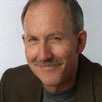A friend told me he visited Washington, D.C., and found everyone he met eager to vote for Democrat Barack Obama. Then my friend moved on to Tennessee and found that everyone he met seemed equally excited about voting for Republican Sarah Palin and her running mate, John McCain.
Yes, McCain is the presidential candidate, but it was Palin, my friend said, who people were excited about. By now, we know all about red states and blues states, but the nomination of the Alaska governor seems to have magnified those differences. One group of voters is horrified by the nomination, and another group is excited and energized by it.
This can be frustrating for voters in states such as California and Texas. Everyone knows that the first will vote for Obama and the other will vote for McCain. This means millions of voters in those states are fired up with nowhere to go – with no way, save writing a check, to put their enthusiasms to work.
Meanwhile, all the excitement and energy of the campaign will be concentrated in less than 10 so-called swing states.
Earlier this year, I wrote about a new book called “The Big Sort,” in which journalist Bill Bishop writes about political and social segregation: “As Americans have moved over the past three decades, they have clustered in communities of sameness, among people with similar ways of life, beliefs, and, in the end, politics.”
Bishop fears this geographic isolation is “tearing us apart.” In the choice of Sarah Palin, there is no doubt that it has revealed two groups of Americans with very different perceptions of the world in which we live.

 Pete Golis is a columnist for The Press Democrat and a longtime resident of Sonoma County.
Pete Golis is a columnist for The Press Democrat and a longtime resident of Sonoma County.